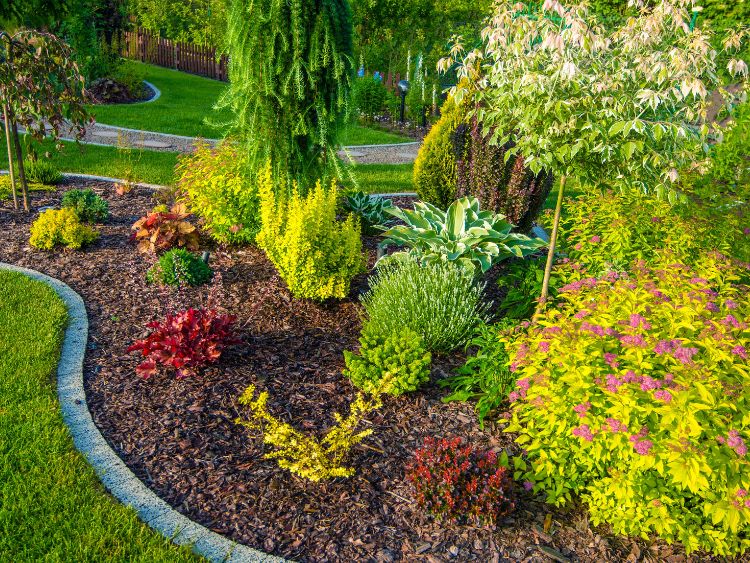As the fall days get closer the perfect time for last-minute fall gardening. While many may think the gardening season is winding down, there are still plenty of opportunities to plant and prepare your garden for winter. From vibrant fall flowers to hardy vegetables, this guide will help you make the most of the season and ensure your garden thrives even as winter approaches. Dive into fall gardening and discover what you can plant now to enjoy a flourishing garden come spring.
Preparing your soil for fall planting
To prep your garden ready for fall planting:
- Begin by clearing out any debris, weeds, and spent plants.
- Turn the soil to aerate it, breaking up clumps and ensuring good drainage.
- Add organic matter like compost or aged manure to enrich the soil with essential nutrients.
- Test the soil’s pH and adjust if necessary; fall is an excellent time to amend soil acidity or alkalinity.
- Try adding mulch to retain moisture and regulate soil temperature.
Proper soil preparation will create a strong foundation for your fall gardening efforts, promoting healthy growth and robust plants.
Cool-weather vegetables to plant in fall
Cool-weather vegetables thrive as temperatures drop, making fall an ideal time for planting. Add leafy greens like spinach and kale to your garden. Root vegetables such as carrots, radishes, and beets also do well in cooler temperatures. Broccoli, Brussels sprouts, and cauliflower can be planted for a late fall harvest. These vegetables tolerate the chill and often develop better flavor as the weather cools. Start seeds indoors or purchase young plants to give them a head start.
Planting cover crops for soil health
Cover crops are an the perfect way to maintain and improve soil health during fall. Planting legumes like clover or vetch can fix nitrogen in the soil, enhancing its fertility. Grasses such as rye or oats can help prevent erosion and suppress weeds. These plants will protect the soil structure through the winter and add organic matter when tilled under in the spring. Choose cover crops suited to your region and planting goals to ensure they thrive and provide maximum benefits.
Choosing the right bulbs for fall planting
When selecting bulbs for fall planting, consider varieties that will bloom beautifully in the spring. Daffodils, tulips, and crocuses are classic choices that can provide a splash of color after the winter months. Make sure that the bulbs are firm and free of mold before planting. Look for early, mid, and late-blooming varieties to extend the blooming season. Plant the bulbs at the proper depth, usually two to three times the bulb’s height, in well-draining soil to prevent rot. For added convenience, keep your bulbs in a cool, dry place, such as a storage shed from Keter, until you are ready to plant them. Consider planting bulbs in clusters for a more natural and impactful display. Properly spacing your bulbs will allow each plant room to grow and flourish.
Caring for perennials in the fall
Cut back any spent foliage and remove dead or diseased parts to promote healthy growth. Mulch around your perennials to retain soil moisture and protect roots from freezing temperatures. Divide overcrowded plants to encourage better development and prevent diseases. Water your perennials adequately, as they still need moisture to thrive. Try adding a layer of straw or leaves for extra insulation for tender perennials. Check for pests and treat if necessary to prevent damage during the winter months.
Protecting your fall garden from frost
Cover your plants with frost blankets or old sheets to shield them from overnight cold snaps. Move potted plants to sheltered areas or indoors when frost is forecasted. Water your garden thoroughly, as moist soil retains heat better than dry soil. Cloches or cold frames protect individual plants and create a warmer microenvironment. Consider using windbreaks, such as burlap screens, to reduce the chilling effects of cold winds. Mulch heavily around the base of your plants to insulate the roots and preserve soil warmth. Regularly monitor weather reports to stay prepared for sudden temperature drops.
Planting trees and shrubs in the fall
Planting trees and shrubs in the fall allows their roots to be established before winter, giving them a head start for spring growth. Choose native or well-adapted species to ensure resilience in your region’s climate. Dig a hole twice as wide as the root ball but no deeper, and backfill with native soil. Add plenty of watr after planting to settle the soil and eliminate air pockets. Place the mulch around the base to retain moisture and protect roots. Avoid fertilizing in the fall to prevent new growth that frost could damage.
Planning for spring with fall gardening
Planning in the fall ensures a vibrant spring garden. Start by planting spring-blooming bulbs like daffodils and tulips. Use cover crops to enrich the soil and suppress weeds. Prepare garden beds by adding compost and adjusting soil pH. Take notes on your fall gardening successes and challenges to refine your approach next year. Prune and mulch perennials, and consider which annuals you’d like to plant once the weather warms. Early planning and preparation will give your garden a strong start and make your spring planting more efficient and rewarding.
Fall gardening offers unique opportunities to enhance and ger your garden readt for the colder months ahead. Choosing the right plants and taking proactive measures to protect and enrich your soil set the stage for a vibrant spring. Embrace the season’s challenges and rewards, and you’ll find that your fall gardening efforts are well worth it. Happy gardening!







